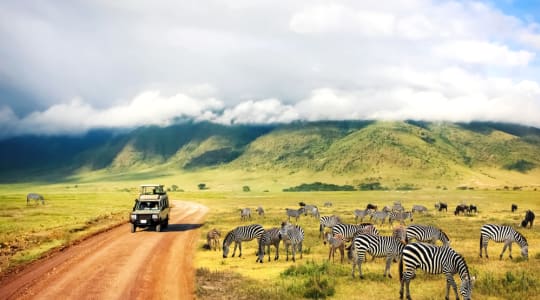
Ngorongoro is a large volcanic caldera located in northern Tanzania. It is home to a diverse range of wildlife and is considered one of the best places in Africa to see the "big five" game animals (lion, leopard, elephant, rhino, and buffalo). The Ngorongoro Conservation Area was established in 1959 and covers an area of over 8,000 square kilometers.
The Ngorongoro Crater is the largest unbroken volcanic caldera in the world, and is around 20 kilometers in diameter. It was formed around 2.5 million years ago when a massive volcano erupted and collapsed on itself. The crater floor is home to an estimated 25,000 large animals, including wildebeest, zebra, buffalo, and gazelle, as well as predators such as lions and hyenas. The crater is also home to over 500 bird species.
Outside of the crater, the Ngorongoro Conservation Area is home to Maasai pastoralists, who have lived in the area for centuries. Visitors to the area can learn about the traditional Maasai way of life, as well as visit the Olduvai Gorge, which is one of the most important archaeological sites in the world. The gorge contains the remains of some of the earliest human ancestors, dating back over two million years.
Explore Near Ngorongoro
Discover 1 attraction within 75km. Perfect for planning day trips, finding connecting flights, or discovering new destinations to explore during your visit.
Nearby Attractions & Places to Visit
1 destination within 15.3km from your location

Cross-Border Adventures Near Ngorongoro
Discover cross-border adventures near Ngorongoro. Explore neighboring countries with similar attractions and extend your travel experience across borders.







